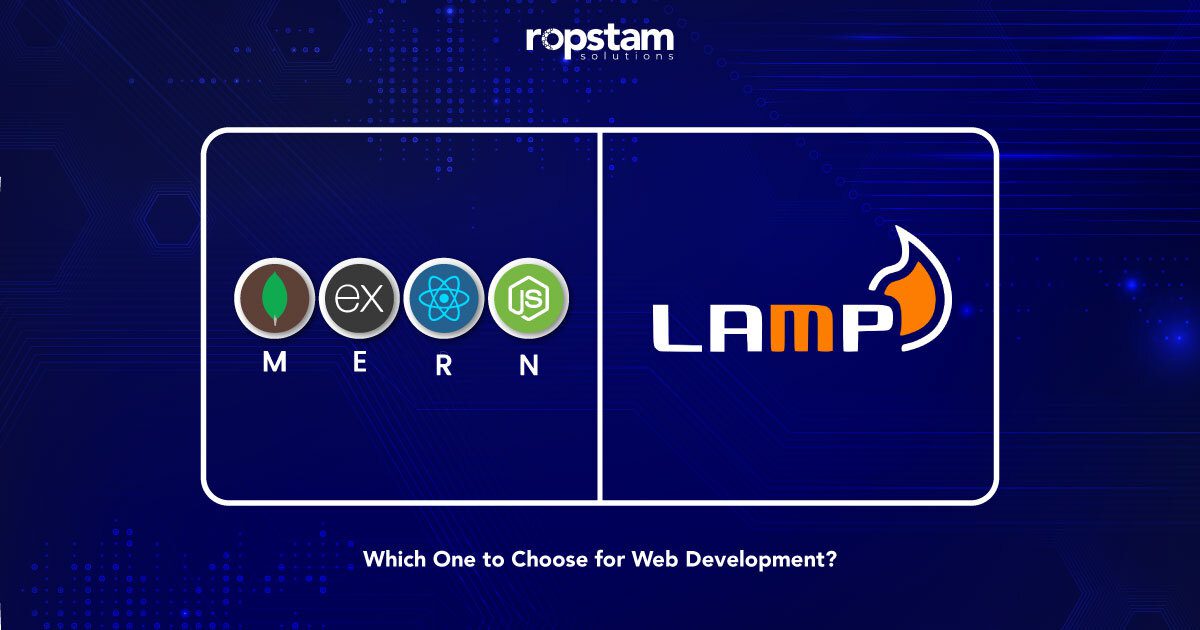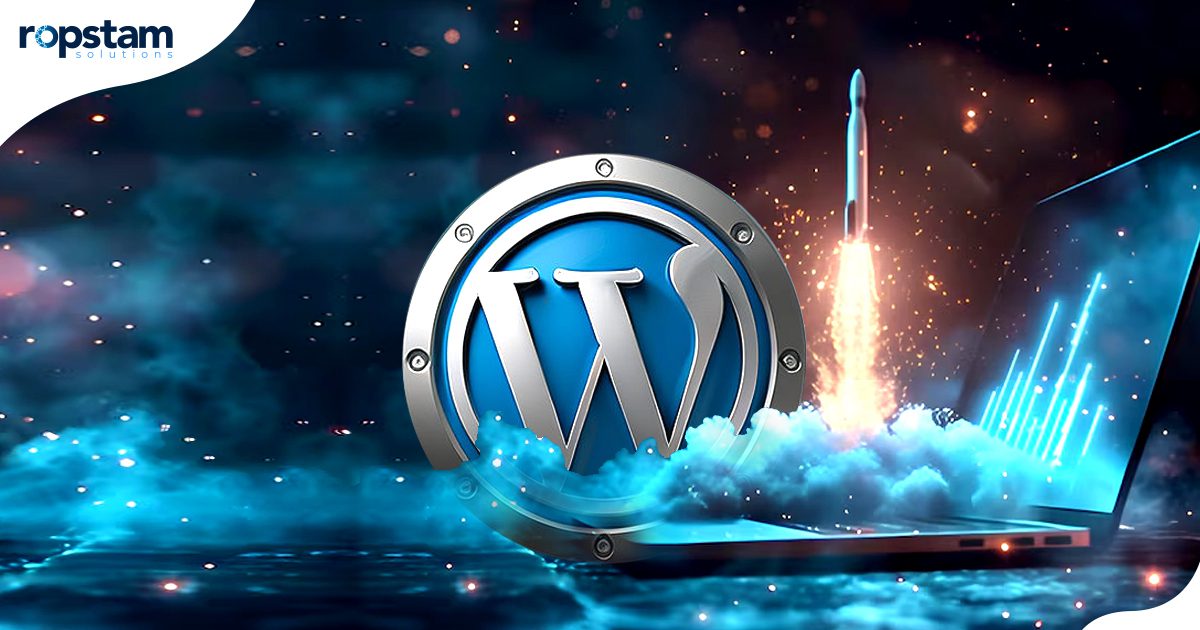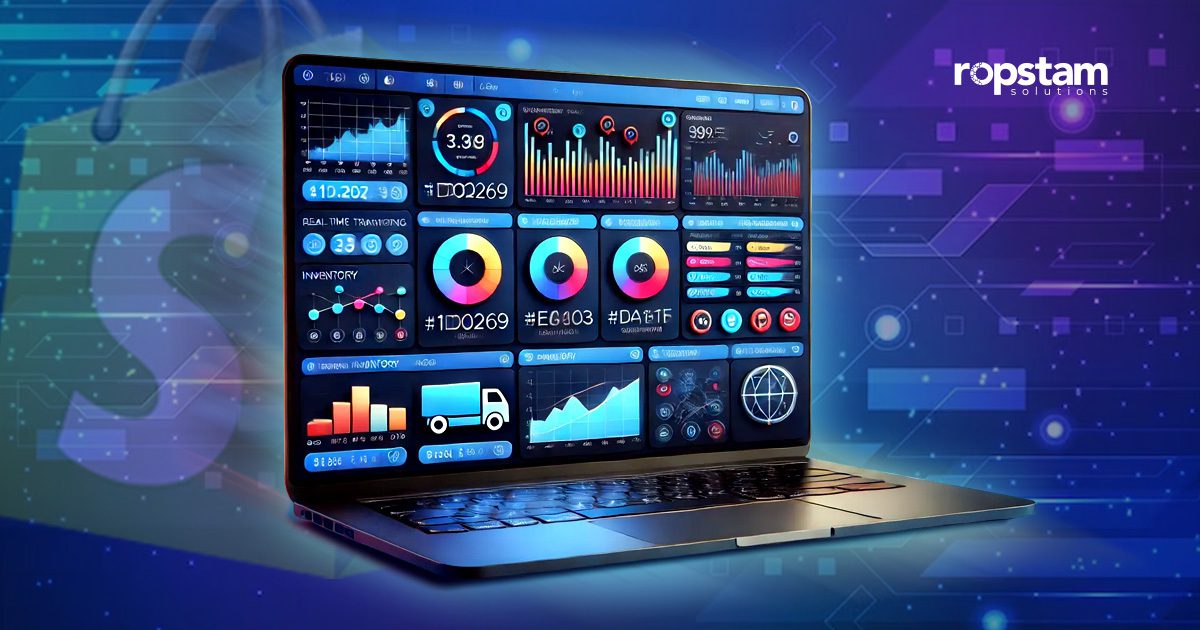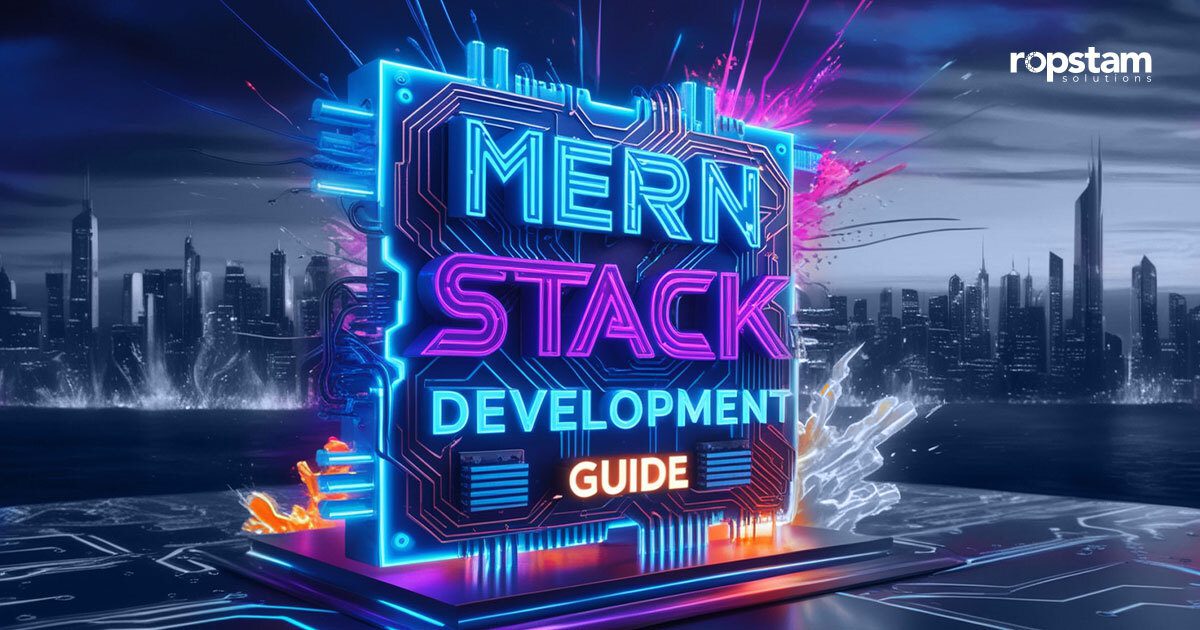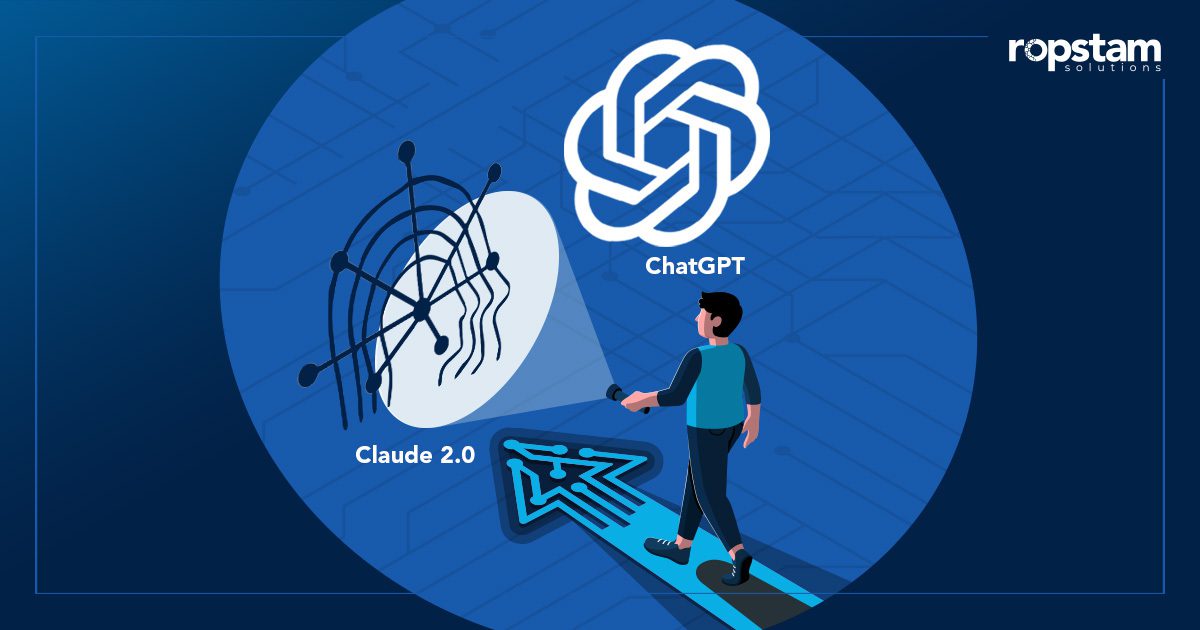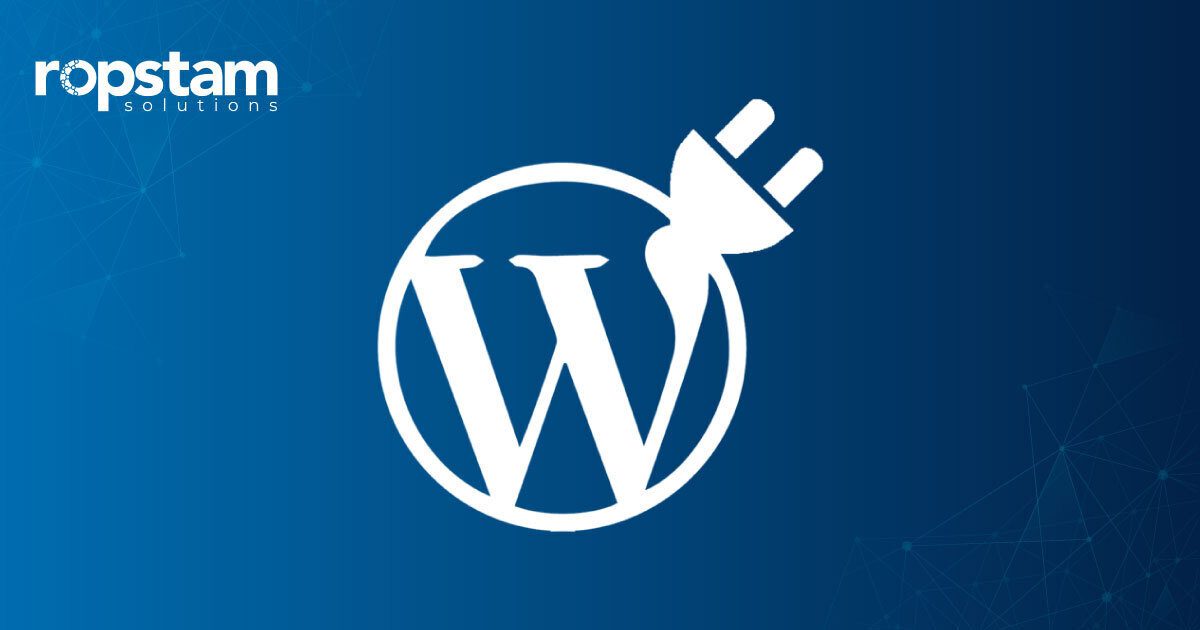MERN vs LAMP, one might wonder, what factors make them different from one another? Which one shall I use for my new projects?
In the ever-evolving world of website and web app development, utilizing tech stacks is of paramount importance for delivering high-performance products. With customers spending less than 55 seconds on average on a particular website, as a web developer, you should try your best to leave no room for error.
In the dynamic universe of the internet, there are more than 3 billion websites out there, meaning that your competition is exceptionally fierce. Two of the more popular tech stacks for creating top-notch websites are LAMP and MERN Stack.
In this blog, we will go through the differences of LAMP vs MERN tech stacks, analyzing their differences to decide which one is ideal for your business or project.
MERN vs LAMP – A comprehensive comparison of stacks for web developers
Here, we have performed a detailed comparison of MERN stack and LAMP stack, to help MERN web developers and LAMP developers make an informed decision. We have evaluated their pros and cons succinctly.
| Factor | MERN | LAMP |
| Operating System | 🥇 Winner Operates on all systems |
Primarily designed for Linux |
| Product Scalability | 🥇 Winner Highly scalable |
Faces scalability issues |
| Customizability | 🥇 Winner Highly adaptable |
Requires customization |
| Lifetime | Newer and growing in popularity | 🥇 Winner Older and mature |
| Performance | 🥇 Winner Superior performance |
Lesser speed |
| Architecture | 🥇 Winner Simpler approach |
Complicated code structure |
| Time to Market | 🥇 Winner Due to Node.js, quick time to market |
Slower development speed means more time required for delivery |
| Cost of Development | 🥇 Winner Less costly to hire MERN Stack developers |
Hiring LAMP developers demand more budget |
| Components | 🥇 Winner MongoDB, Express.js, React, Node.js |
Linux, Apache, MySQL, PHP |
| Popularity | 🥇 Winner Trending technology stack |
Less popular than MERN |
| Dynamic vs. Static Behavior | 🥇 Winner Supports dynamic content |
More associated with static applications |
| Learning Curve | 🥇 Winner A smoother learning curve for developers familiar with JavaScript |
Steep learning curve |
| Maintenance | 🥇 Winner Requires frequent updates |
Since it’s in the market for much longer, it demands more attention |
| Real-time Updates | 🥇 Winner Excels in real-time updates |
Inefficient updates |
| Security Measures | Robust security features | 🥇 Winner Implementation of stringent security principles |
| Community Support | 🥇 Winner Large customer base due to its age |
Strong community support, growing with time |
| Flexibility | 🥇 Winner Stands out for its exceptional flexibility |
Offers some level of flexibility |
| Cross-platform Support | 🥇 Winner Enables cross-platform development |
Lack of effective cross-platform support |
| Compatibility with Cloud | 🥇 Winner Highly compatible with cloud environment |
Additional configurations needed |
| API Integration | 🥇 Winner Supports effortless building and integration of APIs |
API integration not as simplistic |
1. Operating system:
Both the MERN and LAMP stacks can operate on all major systems: Windows, Linux, and MacOS. MERN, backed by Node.js, provides impressive versatility across different systems. LAMP, although originally designed for Linux, can also be set up on other systems, with some additional configuration required. Given the versatility and ease of setup on various systems, MERN has a slight edge here.
2. Product scalability:
MERN is highly scalable due to its non-blocking architecture and the flexibility of MongoDB, making it ideal for large-scale, dynamic applications. LAMP, on the other hand, is stable and reliable but may face scalability issues as MySQL can struggle with very large data sets. Therefore, when it comes to scalability, MERN is the clear winner.
3. Customizability:
Both popular stacks allow for significant customizability. MERN’s use of JavaScript throughout the stack and MongoDB’s schema-less nature make it highly adaptable. LAMP, with its open-source components, also allows for a lot of customization but may require more configuration and expertise. For customizability, it’s a draw; however, MERN might be slightly more flexible due to its uniform language use.
4. Lifetime:
LAMP, as an older stack, has a more extended lifetime and has been around for much longer than other stacks, meaning more tested reliability and a large community for support. MERN, while newer, has rapidly established a solid reputation and strong community backing, attracting many developers. However, when it comes to maturity and proven stability, LAMP edges out MERN.
5. Performance:
MERN’s non-blocking architecture can deliver superior performance in real-time applications. While LAMP’s Apache server and MySQL database are renowned for their robust performance in delivering dynamic web application content, this stack comes second best when it comes to speed and high performance.
6. Architecture:
MERN uses a single language (JavaScript) throughout the stack, which can simplify development. LAMP, on the other hand, uses multiple languages (PHP, SQL), which can be more challenging but allows for the specialized use of each language. In terms of architecture, MERN offers a more cohesive and simpler approach, and therefore, it garners more attraction among web app developers.
7. Time to market:
MERN can potentially lead to a quicker time to market due to the speed of Node.js and the use of a single language throughout. However, LAMP’s maturity and extensive libraries can also expedite development, but not as quickly as MERN. Nevertheless, in terms of getting to market quicker, MERN might have a slight advantage.
8. Cost of development:
Both stacks are open-source and free to use, so the cost primarily depends on developer resources. Since JavaScript is currently more popular, it may be easier and less costly to find MERN developers. Moreover, web development using the MERN stack is also less costly because of the use of a single language from the front end to the back end. Therefore, MERN is likely to be a more cost-effective choice.
9. Components:
MERN’s components (MongoDB, Express.js, React, Node.js) are all JavaScript-based and highly cohesive, providing a consistent development experience. LAMP’s components (Linux, Apache, MySQL, PHP) are diverse and require knowledge of different languages and systems, making it tougher for beginners to adopt this technology stack. When it comes to the cohesiveness and utility of components, MERN stands out.
10. Popularity:
Currently, MERN is gaining a lot more popularity due to the rising fame of JavaScript and React. However, LAMP has been widely used for a long time and still has a significant user base. While both stacks are popular in their own ways, MERN is trending way more in the current web development landscape. Needless to say, in today’s day and age, MERN is – and, in the near future, is expected to be – the preferable choice for web developers.
11. Dynamic vs static behavior:
MERN is more oriented towards dynamic web pages or web apps, especially with the use of React for dynamic UI and MongoDB for handling real-time updates. LAMP, while capable of handling dynamic content, is often associated with more static web applications due to PHP’s server-side rendering. Thus, for dynamic behavior, the MERN stack is ahead in the race.
12. Learning curve:
For developers already familiar with JavaScript, MERN would have a smoother learning curve since it’s JavaScript throughout. LAMP, on the other hand, requires knowledge of multiple languages (Linux, Apache, MySQL, PHP), which could be a bit challenging for beginners. Therefore, in terms of the learning curve, MERN has an advantage.
13. Maintenance:
Both stacks have different maintenance needs. MERN, being more modern, often requires updates and adjustments to stay current. LAMP, being older and more stable, may require less frequent updates but could require more work to integrate with newer technologies.
Both have strong community support for troubleshooting. However, LAMP may require more integrations and attention to detail, given that it has been in the market for so long.
14. Real-time updates:
MERN excels in real-time applications due to its non-blocking architecture and MongoDB’s ability to handle real-time updates efficiently. Being older than MERN, LAMP can manage real-time updates, but it might not be as efficient, especially with large data sets. So, for real-time updates, MERN is the winner.
15. Security measures:
Protecting your website from threat actors is of paramount importance, given the increasing frequency of cyber-attacks. Therefore, it is important to identify a web development framework that adopts the latest security measures.
Both MERN and LAMP have introduced strong security measures with the passage of time. LAMP’s components have been rigorously tested over time, making it quite secure. MERN also offers stringent security, with Express.js providing various security features and MongoDB offering built-in encryption.
16. Community support:
Both stacks have strong community support. Understandably, LAMP, being older, has a larger and more established community. MERN, while newer, has quickly grown into a solid community, especially with the rising popularity of JavaScript and React, but it’s still lagging behind LAMP in this regard. While both are well-supported, LAMP might have an edge due to its larger user base and longer history.
17. Flexibility:
Owing to the use of JavaScript throughout the stack and MongoDB’s schema-less nature, MERN provides a high degree of flexibility. LAMP, with its open-source components, also offers some level of flexibility but might require additional configuration that demands time and resources. While both stacks enable the development of flexible web applications, MERN stands out for overall flexibility.
18. Cross-platform support:
Both stacks support cross-platform development. MERN, with its JavaScript-based components, is particularly effective at creating applications that work smoothly across multiple platforms. While LAMP is also capable of cross-platform development, utilizing this technology stack is not as simplistic due to the diverse languages used. Therefore, MERN has the upper hand in facile cross-platform support.
19. Compatibility with cloud:
MERN is highly compatible with cloud environments, with MongoDB being cloud-native and Node.js being lightweight and scalable for cloud deployment. LAMP can also be deployed in the cloud but might require more configuration, especially in scaling and load balancing. Hence, it is fair to claim that MERN is more cloud-friendly.
20. API integration:
Effectively, both stacks can effectively handle API integrations. However, MERN, with its use of Node.js and Express.js web framework, can potentially offer a more effortless and efficient methodology for building and integrating APIs. LAMP, while robust, might require additional effort to integrate APIs, especially when dealing with different languages. Therefore, for API integration, MERN has a distinctive advantage.
What is MERN stack?
The “MERN Stack” is an acronym for MongoDB, Express, React, and Node.js, which are the four key technologies that comprise the stack. Let’s discuss all these technologies one by one.
What are MERN stack components?
- MongoDB, the “M” in MERN, is a NoSQL database used for storing data in a flexible, JSON-like format and simplifying database interactions. It allows developers to work with data in a more efficient and scalable manner, making it a popular choice for web applications.
- Express, denoted by “E,” is a back-end web application framework for Node.js. It simplifies the process of building web applications by providing a range of features and plugins that can be directly used.
- React, the “R” in MERN, is a JavaScript library developed by Facebook. It is used for building user interfaces, particularly for single-page applications. It allows developers to create reusable UI components.
- Finally, Node.js, indicated by “N,” is an open-source, cross-platform runtime environment for executing JavaScript code outside a browser. It lets developers use JavaScript to write command-line tools and for server-side scripting.
Key features of the MERN Stack contributing to its ever-increasing popularity include – but are not limited to – its flexibility in data storage with MongoDB, the simplicity of building web applications with Express, the usefulness of reusable UI components through React, and the efficiency of server-side scripting with Node.js.
Moreover, all parts of the MERN stack support JavaScript, making it easier for developers to build and manage the stack.
Pros of MERN stack development
- Provides a full-stack solution
- A unified language (JavaScript) ensures efficient communication between client and server
- Each component has an extensive and active community, offering resources and solutions
- Components created in React can be reused, promoting code efficiency
- WebSockets support in Node.js facilitates the development of real-time applications
Cons of MERN stack development
- Mastery of all four technologies can be overwhelming for beginners
- MongoDB may face challenges with scaling due to its document-oriented nature
- While flexibility is an advantage, it can lead to variations in project structure if not managed well
- Might introduce unnecessary complexity for simpler projects
What is LAMP stack?
LAMP is an acronym that stands for Linux, Apache, MySQL, and PHP. These four components come together to create a powerful, open-source web development platform, also known as a web stack utilized for crafting high-performance websites or web applications.
What are LAMP stack components?
- Linux is the operating system that forms the foundation of the stack. It’s known for its robustness and flexibility.
- Apache is the server software that handles requests and serves up web pages. It’s highly reliable and plays a crucial role in serving up web content.
- MySQL is the database management system used for storing and retrieving data. It’s widely used due to its efficiency and ability to handle large volumes of data.
- PHP is the scripting language used for developing web content. It’s dynamic, easy to learn, and has a large support community. Not to mention that PHP can also be replaced with Perl or Python, depending on the developer’s preference.
One of the key features of LAMP is its open-source nature, meaning it’s free to use and modify. It’s also highly flexible, allowing components to be swapped out to suit specific needs. Moreover, it’s supported by a large community of developers who continuously work on updates and improvements, ensuring LAMP remains a reliable choice for web development.
Pros of Lamp Stack Development
- All components of the LAMP stack are free to use and modify, thanks to its open-source nature
- LAMP is highly customizable, allowing developers the freedom to modify and adjust as per their needs
- Due to its popularity, it’s easy to find support and solutions for problems
- Known for its stability, making it a reliable choice for web development
- Relatively easy to understand and use, even for beginners
- LAMP is a very mature stack with proven reliability over time
Cons of LAMP Stack Development
- LAMP Stack is primarily designed for framework, limiting its use on other operating systems
- Requires knowledge of multiple languages, which can be a hurdle for some developers
- LAMP may encounter issues under heavy workloads
- Switching between PHP and Python can be complex and confusing
- Some argue that the LAMP stack hasn’t kept pace with modern web development practices
- For some applications, particularly large-scale ones, LAMP may face scalability issues
When to use MERN stack?
The MERN stack is ideal for developers building modern web applications that require real-time updates and dynamic user experiences. The flexibility of JavaScript across the client-server allows for faster rapid prototyping and clean reusable code. MERN’s use of MongoDB as the database layer instead of SQL provides seamless scaling to handle unstructured big data applications like social media sites with constantly evolving content types.
Unlike the traditional LAMP stack, MERN enables rich interactive UI capabilities using React’s component-based architecture. Not to mention that this stack is great for programmers with JavaScript expertise to build highly responsive apps like web dashboards, voting platforms that change in real-time, chat/messaging apps with push notifications, collaborative tools like Google Docs, and more.
As mobile-first applications continue trending, MERN’s lightweight and performance-focused approach makes it advantageous over inefficient stacks. The vibrant open-source ecosystem around JavaScript also provides a wealth of reusable libraries and modules across the layers, decreasing overall development effort.
When to use LAMP stack?
The LAMP stack remains a robust choice for traditional web applications that require a straightforward relational database structure to maintain consistent data integrity. Its strength lies in stable, legacy applications with unchanging workflows or apps that undergo lengthy product release cycles like enterprise platforms.
Furthermore, the predefined schema and relationships in SQL databases like MySQL suit requirements like inventory management, accounting systems, CRMs, and other apps manipulating structured tabular data.
Additionally, the open-source nature of this tool makes it cost-effective for bootstrapped startups or simple blogs/websites. With its widespread popularity for decades, LAMP offers established conventions for clean separation of concerns, enabling easier maintenance.
For traditional web developers without specialized skills in JavaScript frameworks, sticking to tried and tested PHP on LAMP is less risky for maintaining complex business-critical systems. Also, the inundation of tutorials and resources makes LAMP friendlier for junior developers to get on board quickly.
Choose Ropstam Solutions for your next web development project
MERN and LAMP are two powerful technology stacks in the universe of website and web app development, each boasting distinct features. While MERN facilitates agile web development with its JavaScript flexibility across full-stack, LAMP remains ideal for stable traditional applications needing strict data consistency.
There exist strengths and limitations to both stacks based on the use case context. Rather than a one-size-fits-all approach, analyzing the trade-offs allows for customizing an optimal technology blueprint depending on the project’s scope.
At Ropstam Solutions, we have a dedicated team of web developers boasting years of experience in MERN Stack development. With more than a decade in the field of software development, we have proudly delivered tens of website and web application projects to our satisfied clients. If you are looking to collaborate with us for your next project, contact us now.

